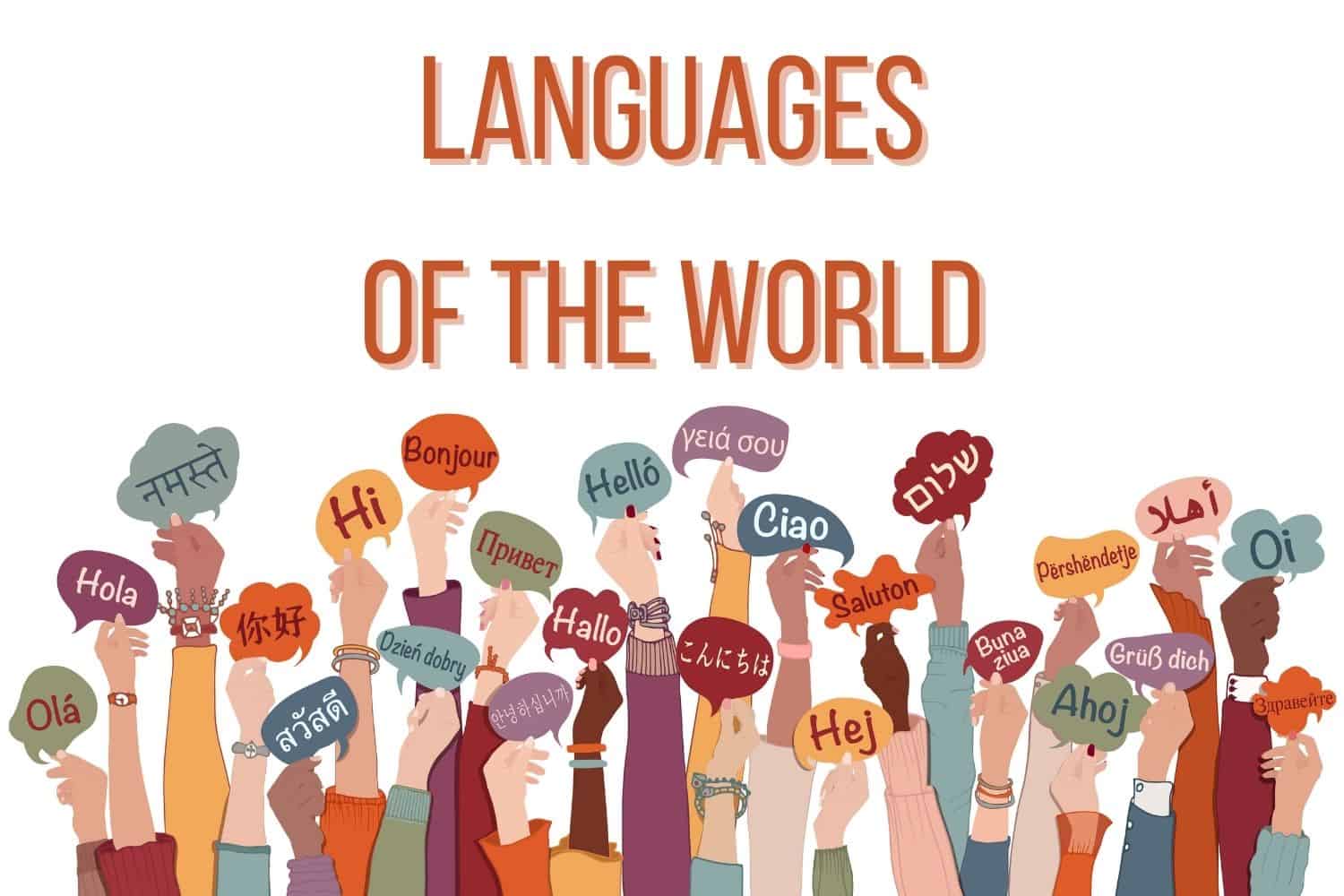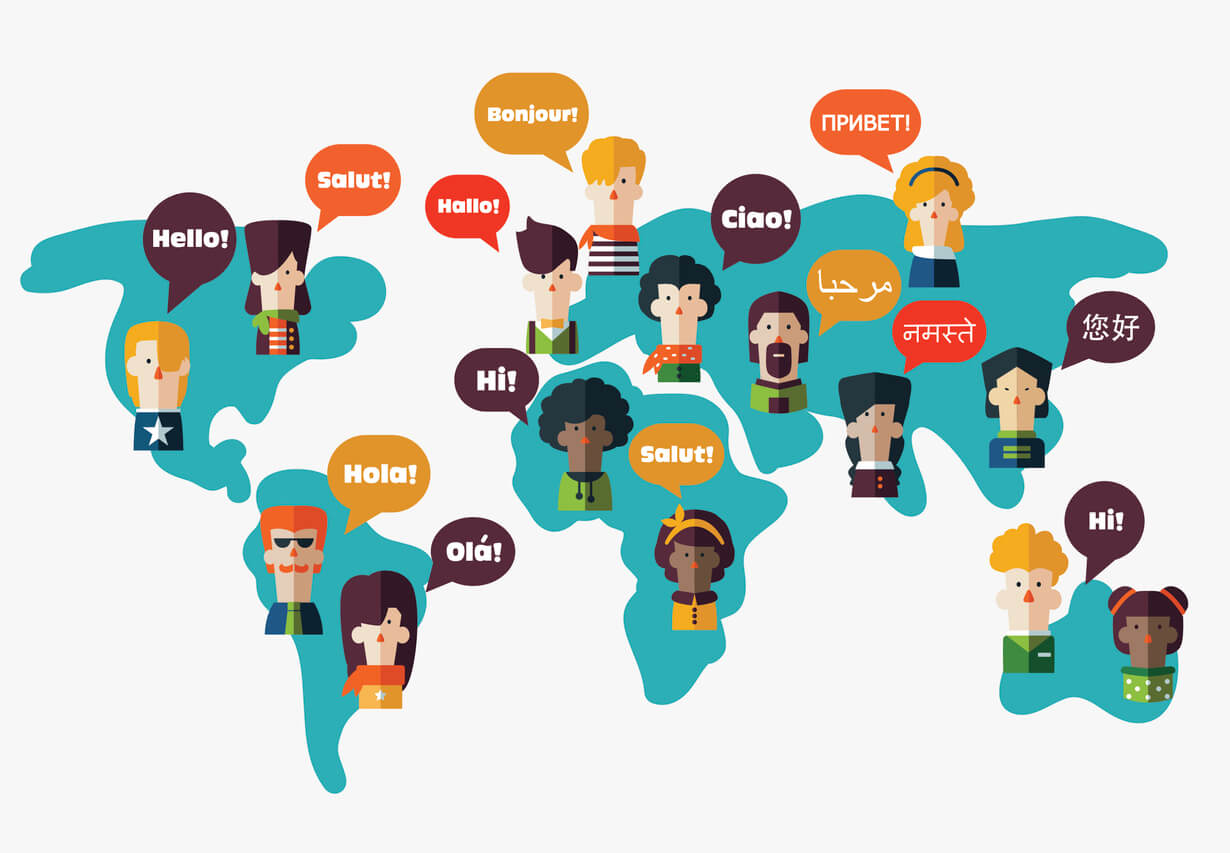Language is the essence of human communication, shaping cultures, societies, and identities. As of today, the world is home to approximately 7,168 languages, each with its unique characteristics, speakers, and historical background. This article delves into the classification, distribution, and endangered status of languages worldwide.

Total Number of Languages in the World
The total number of languages in the world is constantly changing due to the emergence of new dialects and the extinction of others. According to linguistic studies, there are approximately 7,100 languages spoken today. However, this number varies depending on how dialects and regional variations are classified. The most widely spoken languages include English, Mandarin Chinese, Hindi, and Spanish, but thousands of lesser-known languages are spoken by small communities worldwide. Many indigenous languages are at risk of disappearing due to globalization and the dominance of major languages. Efforts are being made to preserve linguistic diversity through documentation and revitalization programs.
Distribution of Languages by Continent
|
Continent |
Number of Languages |
|---|---|
|
Africa |
2,144 |
|
Asia |
2,308 |
|
Europe |
286 |
|
North America |
256 |
|
South America |
448 |
|
Oceania |
1,058 |
Most Spoken Languages
The most spoken languages in the world are determined by the number of native and total speakers, including those who speak a language as a second language. Mandarin Chinese holds the top spot, with over 1.1 billion native speakers, primarily in China. English follows closely, with around 1.5 billion total speakers, as it is widely used as a global lingua franca. Hindi and Spanish also have vast speaker populations, with over 600 million and 500 million native speakers, respectively. Other major languages include French, Arabic, Bengali, Portuguese, and Russian, each spoken by hundreds of millions worldwide. These languages play a crucial role in global communication, business, and culture, influencing international relations and education systems across the world.
Top 10 Most Spoken Languages (Native Speakers)
|
Rank |
Language |
Approximate Native Speakers |
|
1 |
English |
1.5 billion |
|
2 |
Mandarin Chinese |
1.1 billion |
|
3 |
Hindi |
602 million |
|
4 |
Spanish |
559 million |
|
5 |
French |
310 million |
|
6 |
Arabic |
274 million |
|
7 |
Bengali |
273 million |
|
8 |
Russian |
258 million |
|
9 |
Portuguese |
221 million |
|
10 |
Urdu |
170 million |
Endangered Languages
Endangered languages are those at risk of disappearing as their speakers shift to more dominant languages. Linguists estimate that nearly 40% of the world’s 7,100 languages are endangered, with many having fewer than 1,000 speakers left. Factors contributing to language endangerment include globalization, urbanization, cultural assimilation, and the lack of intergenerational transmission. Many indigenous languages, such as Ainu in Japan, Yuchi in the United States, and several Aboriginal languages in Australia, are critically endangered. When a language dies, a unique cultural identity, history, and way of understanding the world are lost. Efforts to preserve endangered languages include documentation, revitalization programs, and educational initiatives that encourage younger generations to learn and use their ancestral languages.
Levels of Language Endangerment
|
Status |
Description |
Example Languages |
|
Vulnerable |
Spoken by children, but only in specific areas |
Ainu (Japan) |
|
Definitely Endangered |
No children speak the language natively |
Yuchi (USA) |
|
Severely Endangered |
Only spoken by older generations |
Cornish (UK) |
|
Critically Endangered |
Very few elderly speakers remain |
Njerep (Nigeria) |
|
Extinct |
No remaining speakers |
Latin (as a native language) |

The Importance of Linguistic Diversity
Language is more than just a communication tool; it preserves culture, history, and identity. Here’s why linguistic diversity is crucial:
-
Cultural Identity: Languages carry traditions, literature, and oral histories.
-
Cognitive Benefits: Multilingual individuals show improved cognitive skills and problem-solving abilities.
-
Scientific Knowledge: Indigenous languages contain knowledge of plants, animals, and ecosystems unknown to modern science.
-
Social Integration: Language connects communities and fosters social harmony.
Language Preservation Efforts
Organizations worldwide are working to save endangered languages. Some key initiatives include:
-
UNESCO’s Language Revitalization Programs
-
Ethnologue’s Documentation Projects
-
Community-Led Language Schools
-
Technology-Based Preservation (e.g., Duolingo for Indigenous Languages)
The 7,168 languages spoken worldwide showcase the immense diversity of human culture and history. However, with many languages facing extinction, preservation efforts are crucial. Understanding and appreciating linguistic diversity enriches societies and ensures that no language is lost to time.
Key Takeaways
-
There are 7,168 living languages globally.
-
Asia has the highest number of languages (2,308).
-
English, Mandarin, and Hindi are the most spoken languages.
-
Over 2,500 languages are endangered.
-
Global efforts are being made to preserve linguistic diversity.





.gif)















Sign in
to continue to ilmkidunya.com